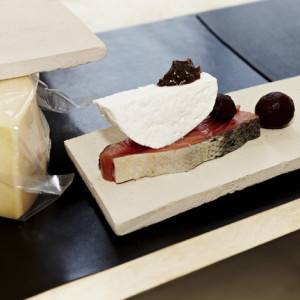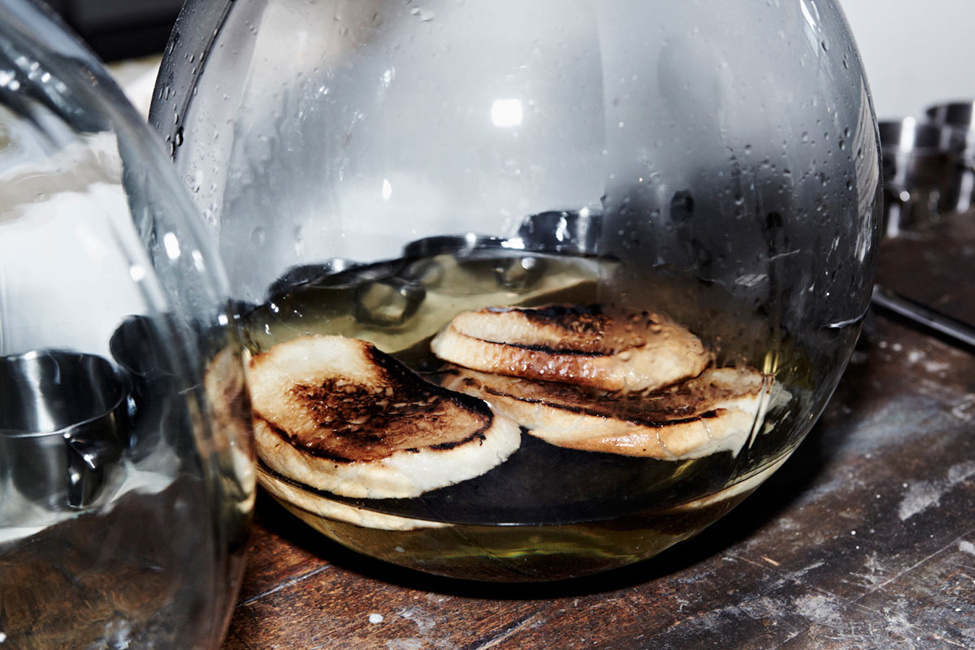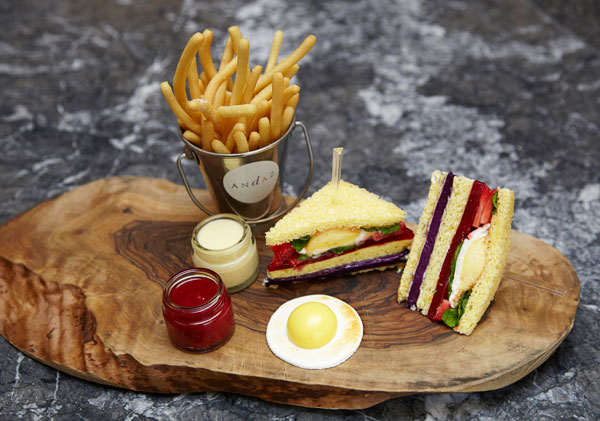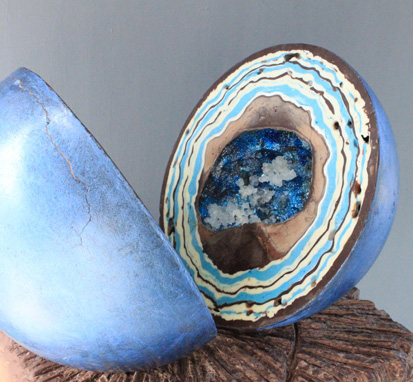
M25 Luncheon. (Image credit: The Back Room by Faye Toogood.)
The London Design Festival has since passed (it was held September 14 – 23, 2012), but one trend has held my attention: the design and food pop-up. This is by no means a new phenomenon at international contemporary design festivals, but it continues to be a presence.
For one, hand-crafted food, served informally, was celebrated. Italian food designers Arabeschi di Latte collaborated with Britain’s Studio Toogood to create the M25 Luncheon (see image above), a meal whose ingredients were sourced from within London’s motorway of the same name. Slabs of salmon and Childwickbury cheese, served with plum chutney and pickled beetroot and washed down with glasses of Burnt Water (burnt toast steeped in sweetened water), were a cast of simple, homegrown ingredients minimally presented to focus on their quality.

Burnt Water, part of M25 Luncheon. (Image credit: Studio Toogood.)
At Haptic Thought and DesignMarketo’s pop-up café, Kopiaste, visitors sat around a farmhouse table and shared food that had been shaped in molds in order to generate a collective space for conversation. The Wundertute Tea House pop-up, also by Arabeschi di Latte, offered tea and cake, enticing visitors to linger and take a lucky dip to win a small piece from the food-design firm’s archive.
Australian food designer Linda Monique collaborated with Andaz Liverpool Street to create the Scrap Lab dinner series, exploring inventive ways to reuse typically leftover and discarded ingredients, with surprisingly sophisticated results. Particularly of interest? A dessert club sandwich served with a side of doughnut fries, raspberry coulis ketchup, white chocolate mayonnaise, and a lemon curd and marshmallow fried egg.

Scrap Lab, disguised dessert (Image credit: Scrap lab.)
Designers at the Festival also engaged directly with food to make objects. In the Designs on Chocolate pop-up project, leading British designers collaborated with local chocolatiers to create objects made from chocolate that represent London. Tom Dixon with Rococo erected crumbling scale tower blocks made from chocolate. Paul Cocksedge created a giant QR-code mosaic consisting of Hotel Chocolat bonbons (when scanned, visitors accessed a gift). And Faye Toogood with Cocomaya fashioned Force of Nature, a stunning version of the ancient London Stone, from marbled chocolate and crystallized sugar.

Force of Nature. (Image credit: Designs On Chocolate at The Dock.)
Such design and food pop-ups point to a trend in the design field – designers engaging with food as subject and material.